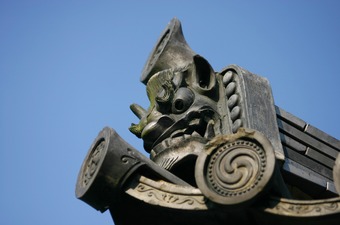A history lies above your head!
 The history of Japanese "Kawara (roof tile)," began from Asuka era, starting from A.D.645, as the arrival of Buddhism. At that time, “Kawara” was used only for temples. Yet, during Edo period, it was allowed to be used for general citizens’ houses by General Yoshimune, the 8th Shogun of Edo period. He decided to encourage people to rebuild their houses with roof tiles; not with woods only, so that the houses can be stronger against fire; too many accidents of fire was a big headache of the Shogun.
The history of Japanese "Kawara (roof tile)," began from Asuka era, starting from A.D.645, as the arrival of Buddhism. At that time, “Kawara” was used only for temples. Yet, during Edo period, it was allowed to be used for general citizens’ houses by General Yoshimune, the 8th Shogun of Edo period. He decided to encourage people to rebuild their houses with roof tiles; not with woods only, so that the houses can be stronger against fire; too many accidents of fire was a big headache of the Shogun.
After the 8th century, people started decorating "Oni (ogre) masks" on the roof with a prey for peace and stability of establishments. Later, as the technical improvement of architecture, many different designs, such as a family emblem or a motif of water to avoid fire, appered, but all of them are called as “Oni Gawara (ogre face shaped roof tile)” as a whole.
Now, Japanese traditional house itself is hardly seen, but "Oni Gawara" is still popular especially for European and American architects as a unique Japanese tradition. Why don't you look up the sky and find the small piece with a long history? The picture is shown "Oni Gawara" of Todaiji Temple in Nara.

Comments